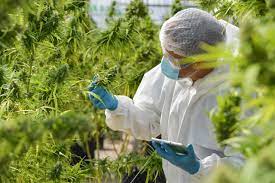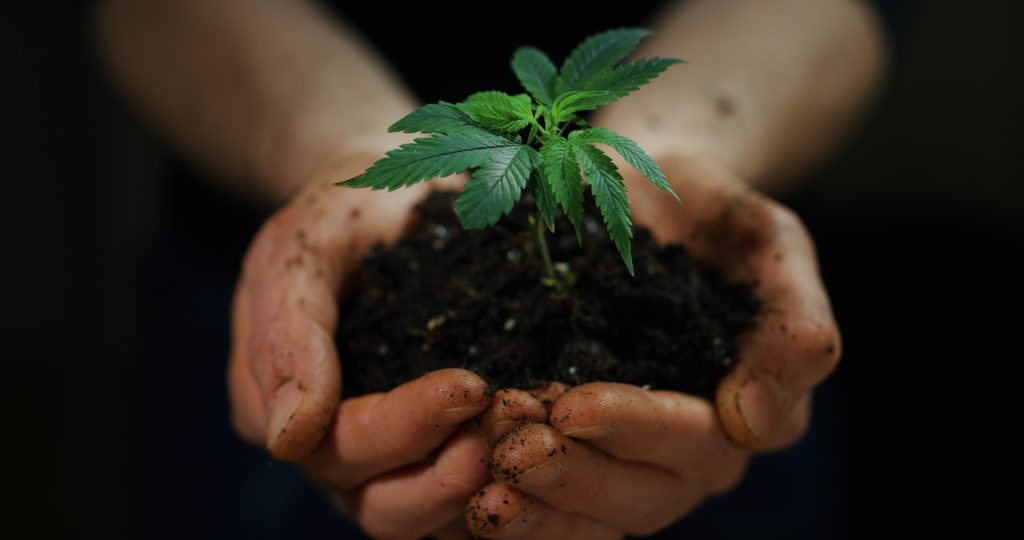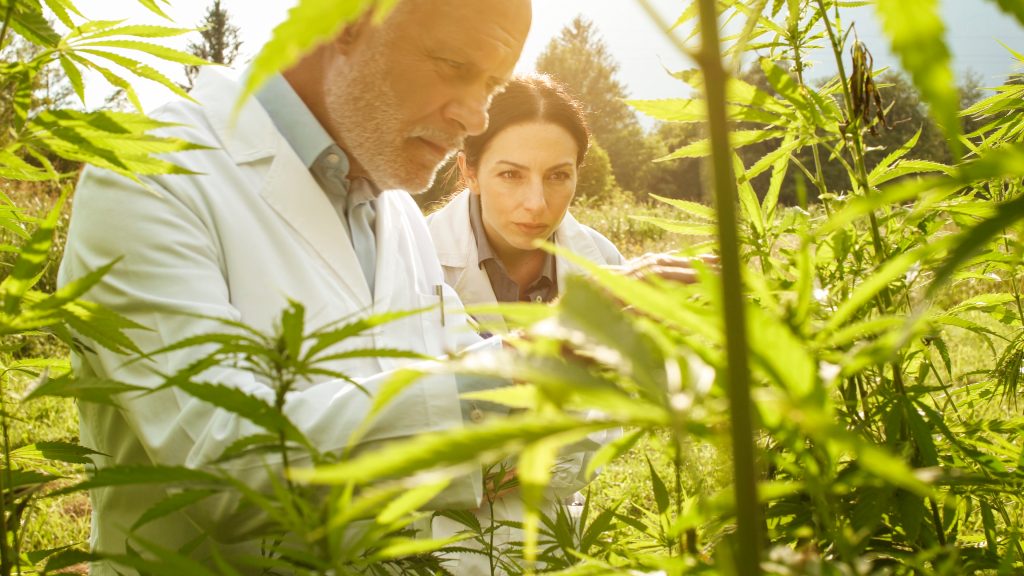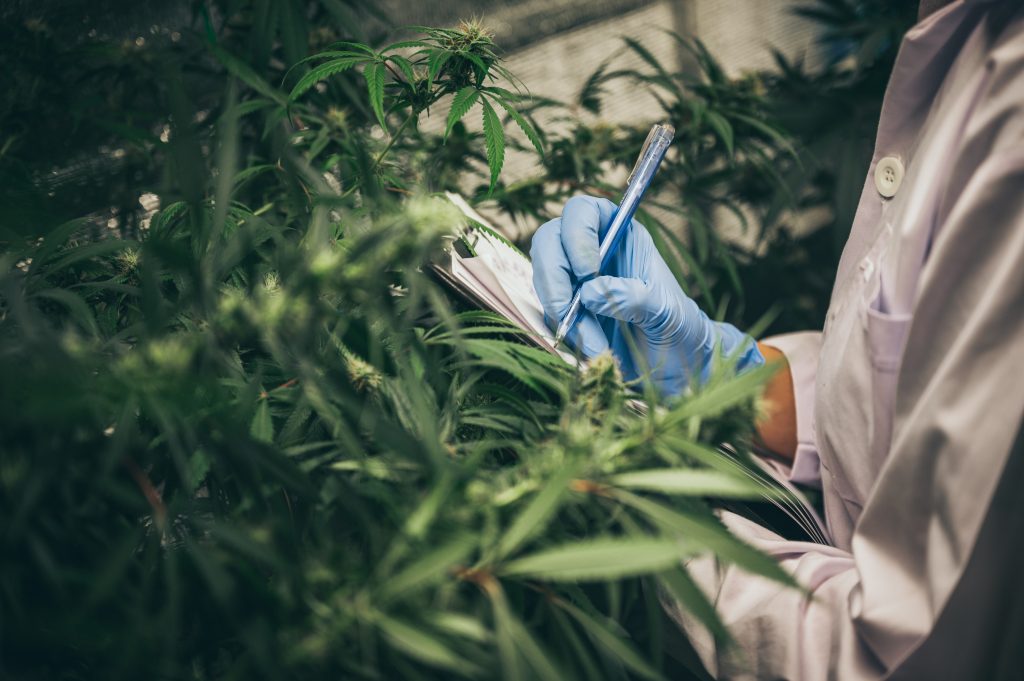
It’s no secret that commercial cannabis cultivation has become a booming industry over the last few years. With more countries now opting to legalize the medical and recreational use of cannabis, teamed with the ever-growing global CBD industry, the farming of cannabis is now happening on a scale never before seen in history. But while cannabis is often touted as a sustainable, and even ‘green’ crop, the commercial scale of this cultivation could actually mean the opposite. But fear not! It is never too late to start growing cannabis sustainably to truly make the most of the green credentials of this amazing crop. First, let’s take a look at the cultivation cycle of the plant.
How does cannabis grow?
Cannabis has been cultivated by humans for thousands of years and continues to thrive in the wild in some areas of the world. This shows us just how easy it can be to grow this crop. On many fronts, cannabis and hemp grow just like any other plant. It needs the right amount of light, water, and nutrients in order to thrive. Nonetheless, the best cannabis farmers will understand that each stage of the cannabis cultivation process has its own unique demands. Here is a little look at the life cycle of a typical commercially grown cannabis plant:
Germinating:
Prior to germination, it is essential to leave seeds enough time to reach maturity. Clear signs of this include seeds being hard, shiny, and light to dark brown in color. If the seeds are still green and squishy, they are most likely still underdeveloped. When kept in the right conditions, the cannabis seed will soon start to germinate. This often requires as much sunlight as possible, which is increasingly achieved through artificial lights.
Seedling:
This stage means that the seeds have now sprouted their roots and have begun to grow leaves. They have been planted and are ready to reach their full potential as cannabis plants. While seedlings can survive outside and in natural conditions, many farmers may choose to keep them inside and use artificial light to ensure their survival.
Vegetative:
The vegetative stage of cannabis is where the plant’s growth truly takes off, and it typically lasts 3-16 weeks. This is also the time to begin topping or training your plants. At this stage, the plant’s water supply needs to be increased to support rapid development. Each plant also requires more space in order for its roots to grow strong. This stage requires huge amounts of water and land area – especially when practiced on a commercial scale.
Flowering:
As the plants begin to reach the flowering stage of their life cycle, they require much less sunlight. In fact, pre-flowering plants will require 10-12 hours of darkness every day in order to flower. However, they will still require up to 12 hours of sunlight. This is the final stage of the cannabis cultivation cycle and, once complete, the plant is ready for harvesting! While this cycle potentially allows farmers to harvest up to six crop cycles in a single year, it is often difficult to achieve this sustainably. As such, the ecological benefits of cannabis cultivation are often overwhelmed as we endeavor to produce cannabis on a commercial scale to meet consumer demand. Many things contribute to this, including high usage of water, energy, land, and the use of environmentally harmful pesticides. As cannabis cultivation firms and local farmers trip over one another to make their profit in the booming, yet still relatively new, cannabis and CBD industries, sustainability practices are often the last consideration to be made. Instead, cannabis cultivation often relies on indoor farming facilities that require immense amounts of energy to power UV lights up to 18 hours a day, seven days a week. Luckily, there are ways that cannabis cultivators can cut down their carbon footprint and begin to farm cannabis more sustainably.

Voibon Tips
How does cannabis grow Sustainably?
It is becoming increasingly apparent that cannabis is no longer a small-scale operation in specific parts of the country. The recreational and medical cannabis sectors, compared with the CBD industry, are now potentially worth billions of dollars. However, it is crucial that, as scale continues to increase, we are able to maintain sustainable industry standards at every stage of cultivation and product development. The cannabis cultivation sector has the opportunity to yield the green credentials of its chosen crop to set an example of sustainable farming for the rest of the world.
Grow Outdoors
As we mentioned earlier, cannabis continues to grow effectively in the wild in many parts of the world. Admittedly, this requires the right climate; however, it is a factor that should always be considered when looking for a place to grow high-quality, sustainable cannabis. Furthermore, hemp (the name given to low-THC cannabis), which is usually used for the production of CBD, can withstand lower temperatures than other kinds of cannabis. This can help to significantly reduce the energy used by heaters in commercial cannabis growing facilities. Hemp cultivation can also require up to 50% less water than other forms of cannabis farming!

Energy-Efficient Equipment
The use of effective and efficient equipment can also be a game-changer in achieving sustainable cannabis farming. The implementation of sustainable energy sources, such as solar panels and wind turbines, alongside integrated controls and system automation, can help to reduce the amount of unsustainable energy used for the cultivation of cannabis. Precise irrigation technology can also help to solve the problems of water usage. This technology involves placing sensors at the base of the hemp plant to measure and analyze the health of the plant, including water availability. This helps to identify the best times of day to introduce water to the crop, optimizing crop productivity and minimizing water waste!

Regenerative Farming
Another way in which farmers can make the most of their cannabis crops while limiting their environmental impact is by practicing regenerative farming. This means employing practices to ensure that the soil is effectively replenished and repaired after each harvest. Regenerative farming can mean that an area of land is much more productive for far longer than other farmland. The soil on a cannabis farm does not only produce cannabis, but also cultivates fungi, bacteria, algae, and micro-organisms – all of which contribute to a healthy ecosystem and effective cannabis cultivation.





